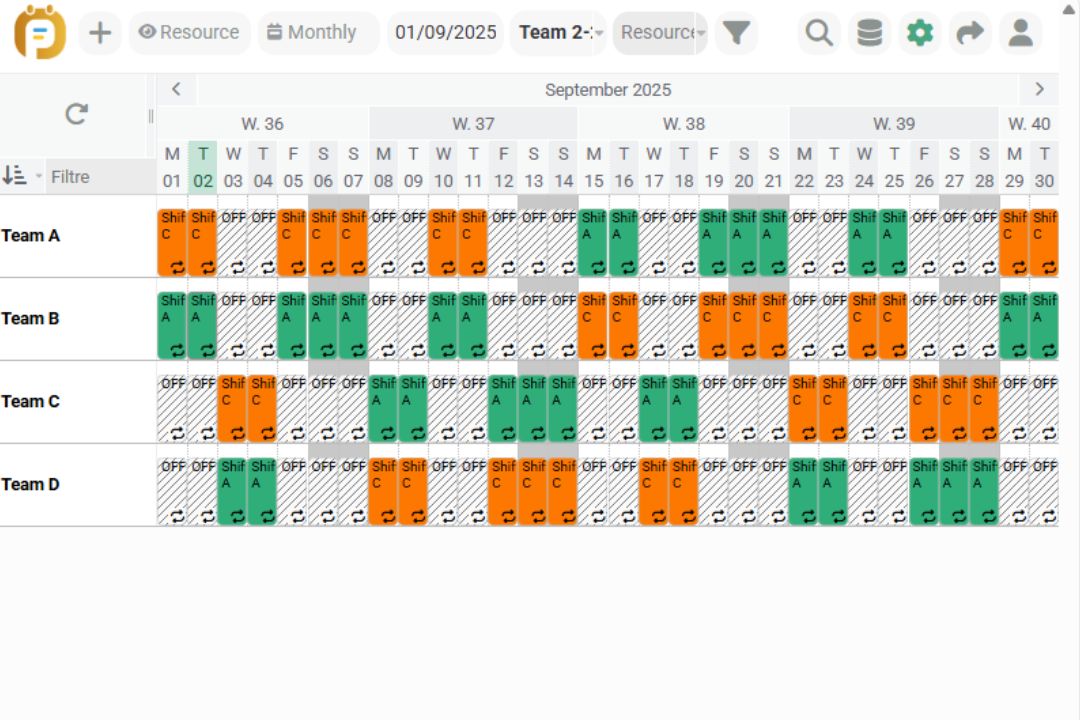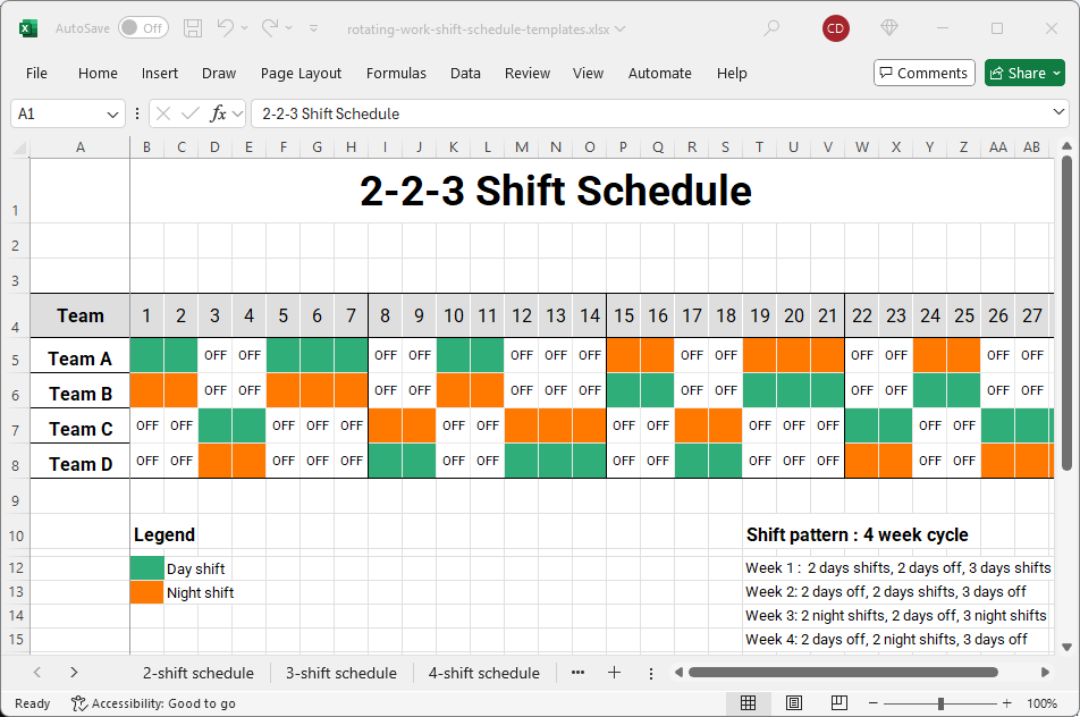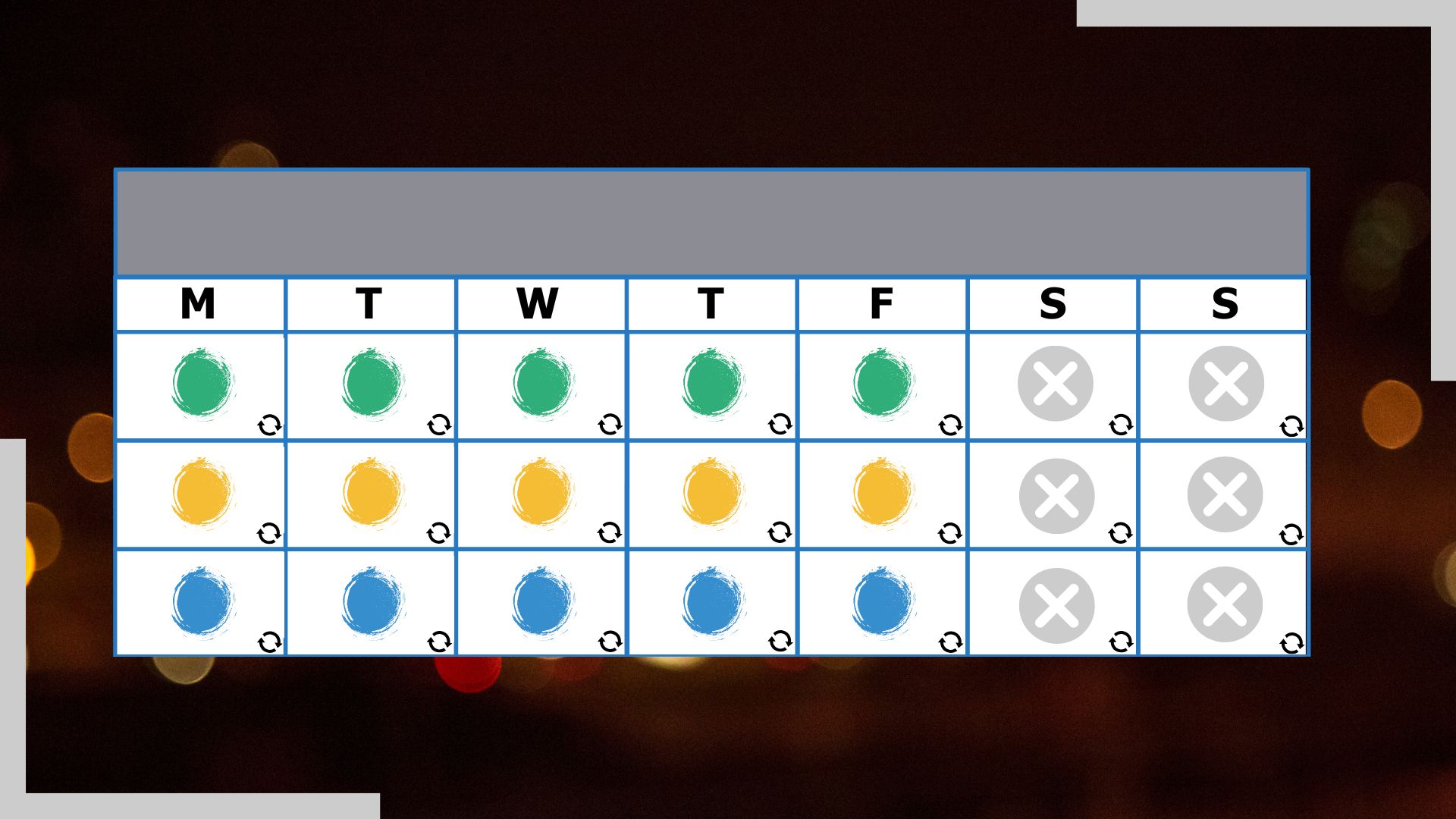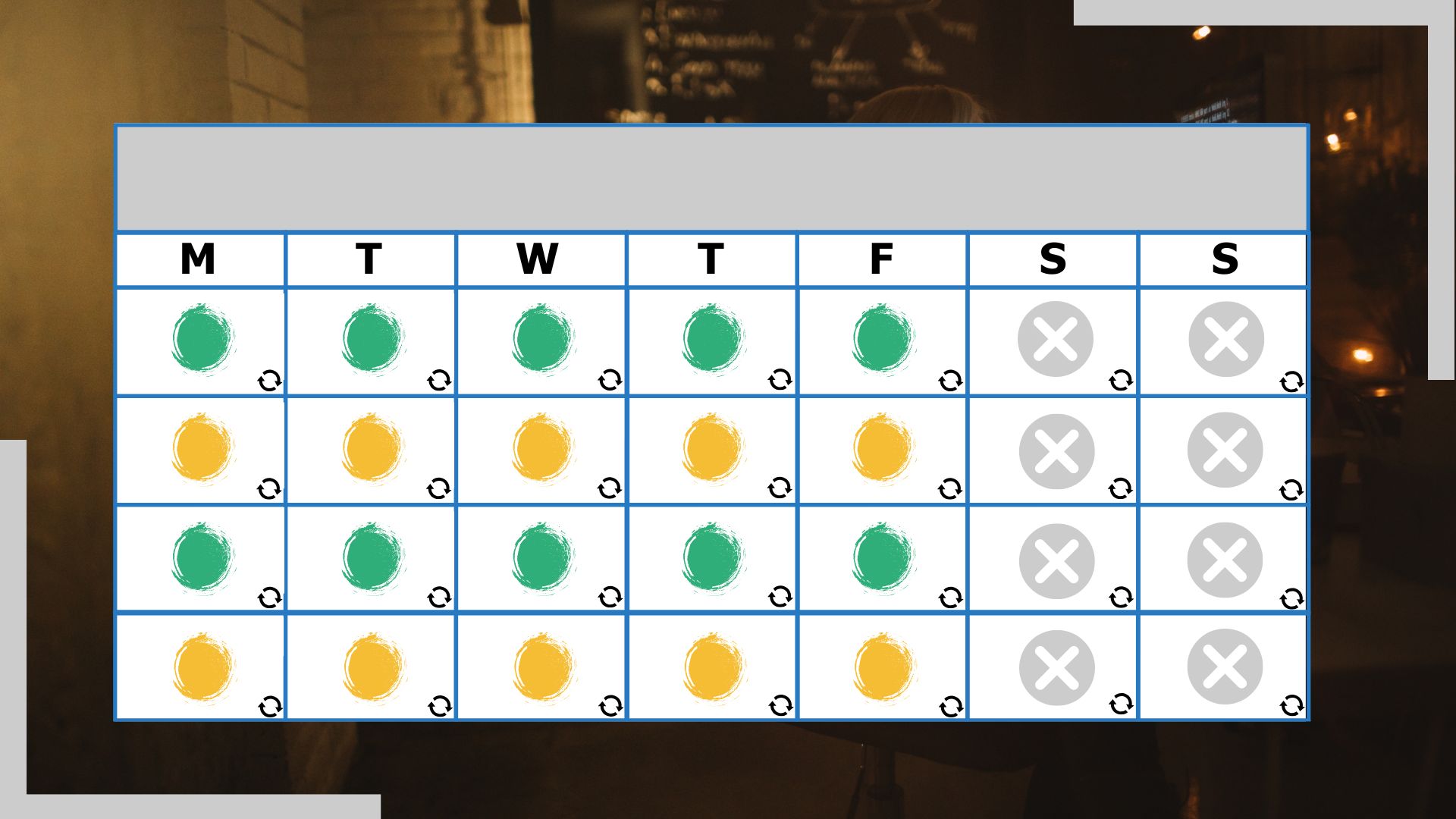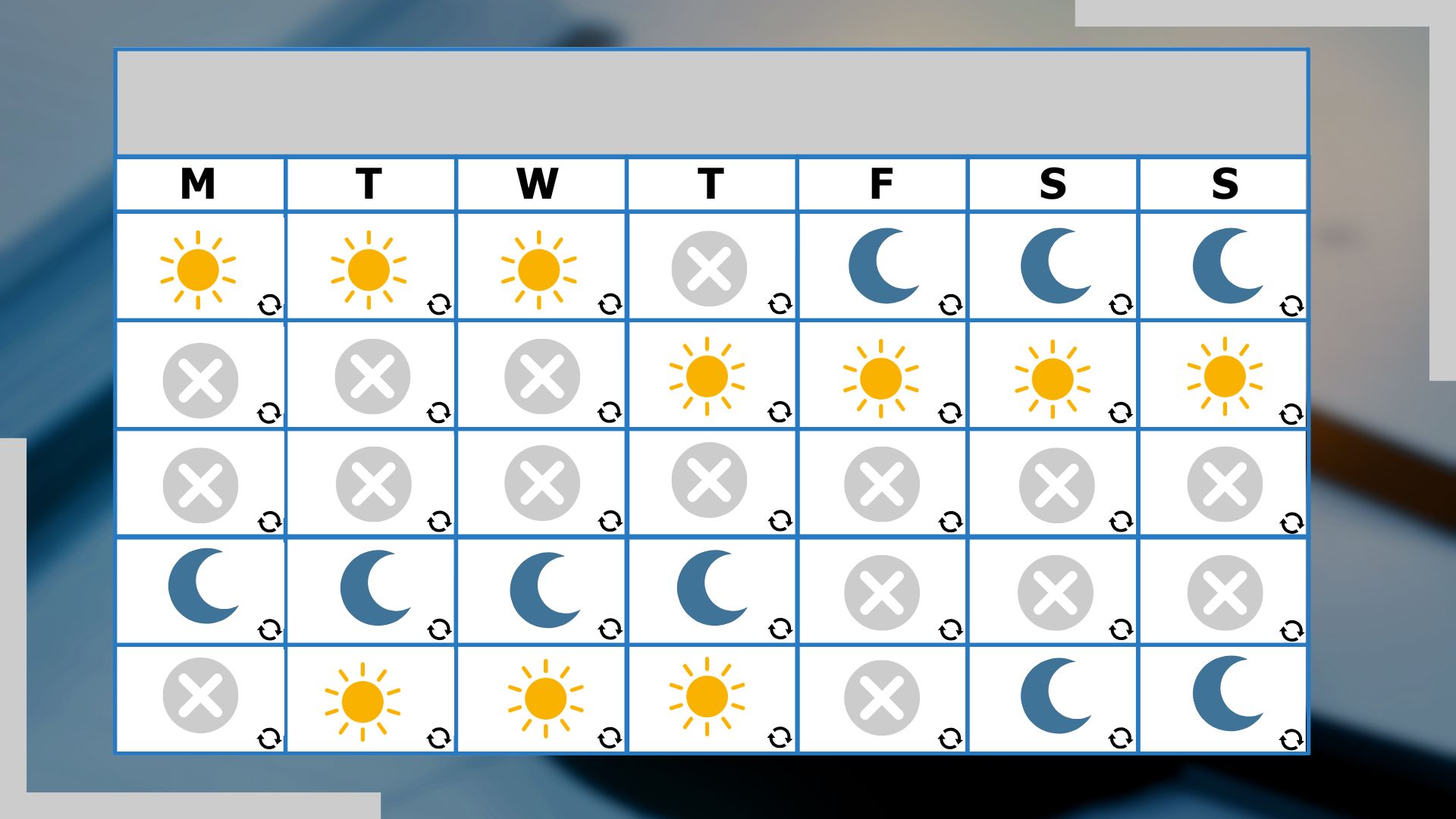2-2-3 shift schedule
A complete guide with free templates to help you create a 2-2-3 shift rotating schedule
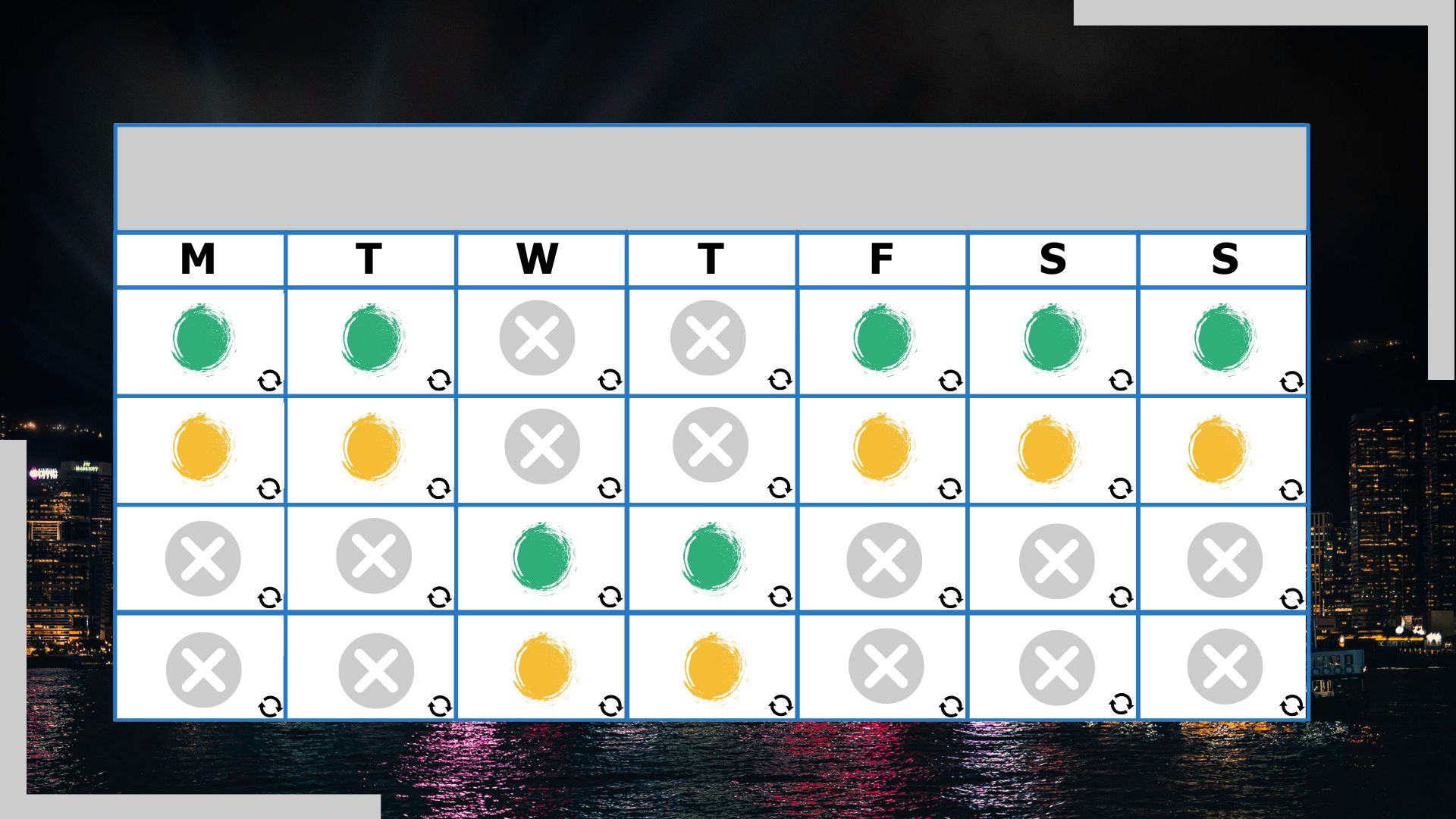
The 2-2-3 shift schedule, also known as the Panama schedule, is a common work schedule used in industries that require 24/7 coverage, such as manufacturing, healthcare, and public safety. This article explains how to create a 2-2-3 shift schedule with PlanningPME.
What is a 2-2-3 shift schedule?
A 2-2-3 shift schedule is a rotating work schedule where employees work 8 or 12-hour shifts over a 2-week period, typically covering 24/7 operations. The name "2-2-3" refers to the structure of the shifts. This schedule divides the workweek into a repeating cycle of 2 days of work, followed by 2 days off, and then 3 days of work, which is repeated every two weeks.
Free 2-2-3 shift rotating schedule templates
Looking for an easy way to manage a 2-2-3 shift pattern? These free schedule templates are designed to help you quickly set up and maintain a 2-2-3 work schedule, also known as the Panama schedule, with PlanningPME or Excel.
How to create a 2-2-3 rotating shift schedule
First, it is essential to define the logic of the rotating cycle. For this rotation, we will create 8 different shift patterns that repeat every 4 weeks.
With PlanningPME, each shift pattern can be created as a “task” and the days off as “unavailabilites”. The following is the list of all shifts you need to create for the 4 teams:
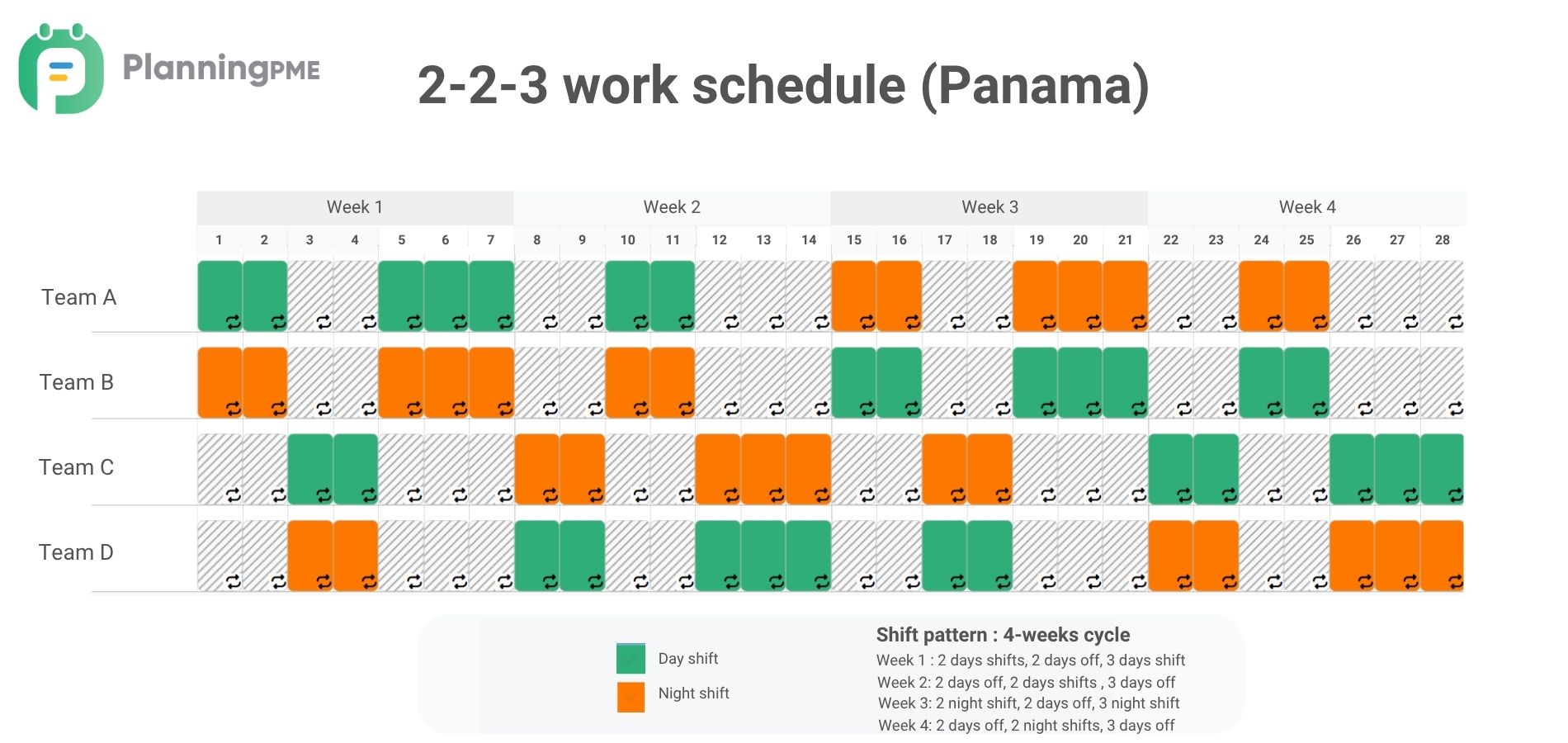
Week 1
Task 1 :
- Resource : Team A (Respectively Team B, Team C, Team D)
- Label : Shift A (Respectively Night Shift, Shift OFF, Shift OFF)
- Days : Monday, Tuesday, Friday, Saturday, Sunday
- Recurrence : Every 4 weeks
Task 2 :
- Resource : Team A (Respectively Team B, Team C, Team D)
- Label : Shift OFF (Respectively Shift OFF,Day Shift, Night Shift)
- Days : Wednesday, Thursday
- Recurrence : Every 4 weeks
Week 2
Task 3 :
- Resource : Team A (Respectively Team B, Team C, Team D)
- Label : Shift OFF (Respectively Shift OFF, Night Shift,Day Shift)
- Days : Monday, Tuesday, Friday, Saturday, Sunday
- Recurrence : Every 4 weeks
Task 4 :
- Resource : Team A (Respectively Team B, Team C, Team D)
- Label : Shift A (Respectively Night Shift, Shift OFF, Shift OFF)
- Days : Wednesday, Thursday
- Recurrence : Every 4 weeks
Week 3
Task 5 :
- Resource : Team A (Respectively Team B, Team C, Team D)
- Label : Night Shift (RespectivelyDay Shift, Shift OFF, Shift OFF)
- Days : Monday, Tuesday, Friday, Saturday, Sunday
- Recurrence : Every 4 weeks
Task 6 :
- Resource : Team A (Respectively Team B, Team C, Team D)
- Label : Shift OFF (Respectively Shift OFF, Night Shift,Day Shift)
- Days : Wednesday, Thursday
- Recurrence : Every 4 weeks
Week 4
Task 7 :
- Resource : Team A (Respectively Team B, Team C, Team D)
- Label : Shift OFF (Respectively Shift OFF,Day Shift, Night Shift)
- Days : Monday, Tuesday, Friday, Saturday, Sunday
- Recurrence : Every 4 weeks
Task 8 :
- Resource : Team A (Respectively Team B, Team C, Team D)
- Label : Night Shift (Respectively Day Shift, Shift OFF, Shift OFF)
- Days : Wednesday, Thursday
- Recurrence : Every 4 weeks
Create your 2-2-3 shift schedule
Pros and cons of a 2-2-3 schedule
Advantages
- Extended time-off : The schedule allows employees to have long weekends every other week, which can improve work-life balance.
- Continuous coverage : This shift ensures staffing of every day of the week, even during weekends and holidays.
- Fewer days worked : While the shifts are long, employees work only 3 or 4 days a week, reducing the number of days spent at work.
Disadvantages
- Long shifts : The 8-hour or 12-hour workday can be exhausting, especially when working back-to-back shifts.
- Disrupted sleep patterns : Working night shifts, or rotating shifts, can impact sleep quality and health.
- Shorter time off during certain weeks : Even though employees get extended breaks, during some weeks, they work 3 consecutive 12-hour shifts, which can lead to tiredness.
Which industries use 2-2-3 shift?
The 2-2-3 shift schedule is commonly used in industries where 24/7 operations are essential, and continuous coverage is required, even during nights, weekends, and holidays. This type of schedule provides a balance between work time and rest time, helping to ensure productivity while reducing fatigue.
Here are some industries that often use the 2-2-3 shift schedule:
- Manufacturing
- Healthcare
- Emergency services
- Energy and utilities
- Transportation and logistics
- Security
- Telecommunications
- Retail (24-hour stores)
- IT and data centers
FAQ
Employees typically work 12-hour shifts, resulting in either 36 or 48 hours per week depending on the rotation. Over a two-week period, the average is 42 hours per week.
It depends on personal preference and industry needs. While it provides more days off, the 12-hour shifts can be exhausting for some employees.
Maintaining a consistent sleep schedule, staying hydrated, and taking short breaks during shifts can help. Employers can also provide fatigue management training and ergonomic workstations.
Yes, it can be used for both day and night shifts, usually rotating every few weeks. Some companies keep employees on a fixed shift to reduce sleep disturbances.


